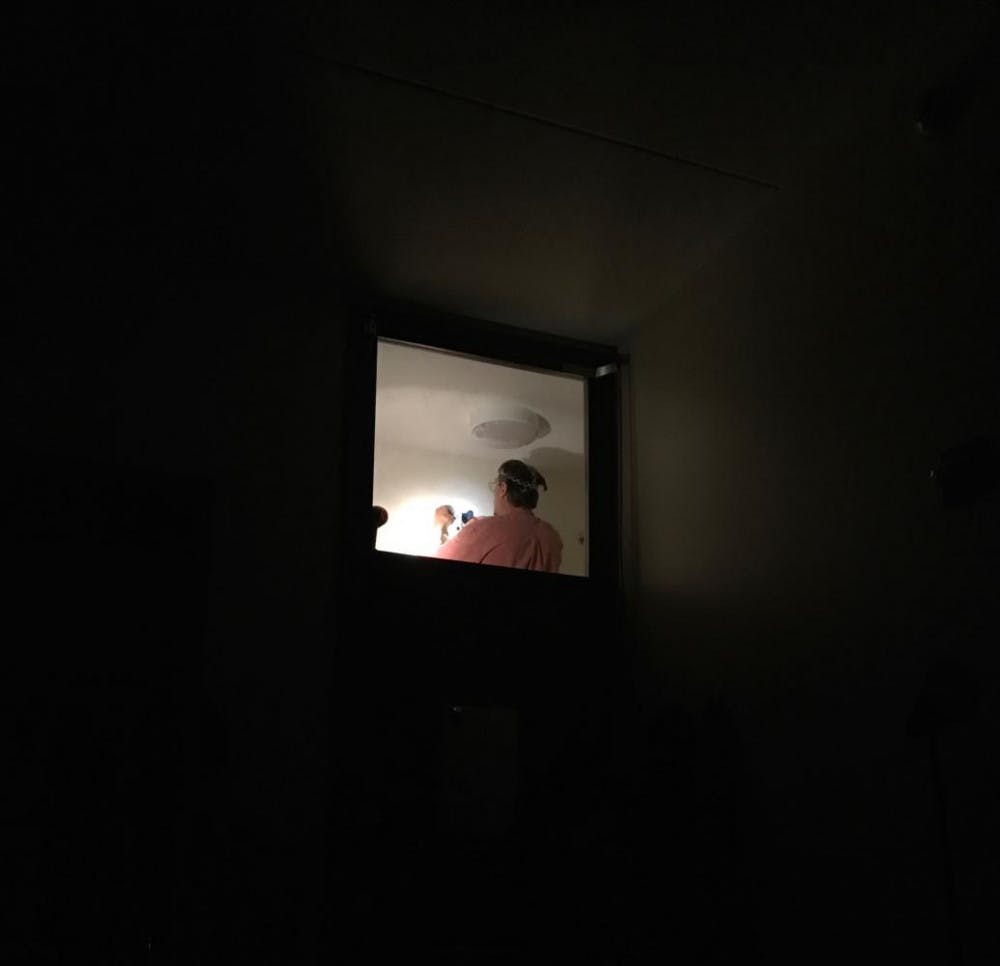In the early hours of Oct. 1, a carbon monoxide alarm went off in the Atwater A building, forcing students to vacate their beds and wait outside the building for two hours.
Lisa Burchard, director of Public Safety and associate dean of the college, described what happened that morning in an email to The Campus.
“At 1:11 a.m. Public Safety received a carbon monoxide (CO) alarm from the alarm monitoring system,” she said. “The telecommunicator dispatched officers and the Middlebury Fire Department (MFD) to the location of the alarm at Atwater Hall A. By 1:30 a.m., Facilities Services was notified of the CO alarm and informed that MFD was responding.”
Despite the alarm, there was no danger. A faulty carbon monoxide detector had triggered the alarm.
“MFD arrived and cleared the building as is our policy,” Burchard said. “They determined there was no CO leak in the building. At 2:30 a.m., Facilities Services determined that a CO detector in the building had failed, replaced it, and reset the control panel.”
Charlotte Frankel ’18.5 lives in the Atwater suite that housed the defective alarm.
“We left the building around 12:50 a.m., I think,” Frankel said. “Public Safety was there immediately, and they said the fire department had to come before the alarm could be shut off. I spoke with one of the Public Safety officers, who informed me that it was the carbon monoxide alarm and although it was probably a false alarm, the fire department needed to come and do a full sweep to be safe.”
Another resident of Atwater A, Margaret Pollack ’18, shared a similar experience.
“Morale was desperately low,” Pollack said. “Plus, the keypads aren’t working in the A building, so I’ve heard of peers and neighbors of mine who were then locked out because they had forgotten to grab their physical key when they tried to return after the alarm went off.”
“I went over to the other side and slept on a couch in my friends’ suite but I don’t know what people did if they didn’t have other friends in Atwater B,” Pollack said.
After the alarm had been going off for some time, a Public Safety officer found Ryan Rudolph ’18 in his room in Atwater A.
“I woke up to a firefighter and Public Safety tapping me to wake up. They told me I needed to go outside. I was very confused since nobody was outside, and it felt like I was late to the party,” Rudolph said.
According to the college handbook, a student who fails to leave a building during a fire alarm will be fined $200.
“I was informed that I had slept through the alarm for 40 minutes. [The officer] claimed that nobody sleeps through that alarm, and said I was going to be getting a fine. He made it seem as if I was trying to evade the alarm, but my explanation was that I wasn’t trying to die of carbon monoxide and I was just in a heavy sleep. I proceeded to go to the other Atwater building and sleep on the floor,” Rudolph said.
Meanwhile, Frankel passed the time with friends as the alarm continued to ring. Eventually residents were allowed to reenter the building, and an electrician arrived to inspect the alarm.
“The alarm remained on for this entire time — I went to a friend’s room and then to the Atwater A lounge, where many of us were congregated. We went back into the building around 2:40 a.m. Michael the electrician came up to our suite pretty soon after we returned and let me know that one of our three carbon monoxide alarms wasn’t working,” Frankel said.
She was finally able to rest after Michael finished his work.
“He was incredibly nice and conscientious of the lateness, answering all of my questions and doing his best to fix the alarm with as little light and noise as possible,” Frankel said. “He replaced the alarm with a new one and then I passed out.”
While the duration of the alarm may have been unusual, Burchard says the response was typical for the situation.
“I’ve spoken with Facilities and they describe the above as a normal business process and typical response to an event of this kind. The first priority was the safety of the students in Atwater,” she said.




